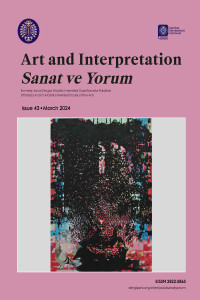About the Art and Interpretation
Art and Interpretation is a peer reviewed, open access, online-only journal published by the Atatürk University.
Art and Interpretation is a biannual journal published in both English and Turkish. The journal has issues in March, and September.
Journal History
As of 2022, the journal has changed its title to Art and Interpretation.
Current Title (2022-…)
Art and Interpretation
EISSN: 2822-2865
Previous Title (1999-2021)
Sanat Dergisi: Atatürk Üniversitesi Güzel Sanatlar Fakültesi
ISSN: 1302-2938
EISSN: 2687-4857
Abstracting and Indexing
Art and Interpretation is covered in the following abstracting and indexing databases;
• DOAJ
• ERIH PLUS
• TUBITAK ULAKBIM TR Index
• EBSCO
• CNKI
All content published in the journal is permanently archived in Portico.
2024 - Issue: 43
Content of this journal is licensed under a Creative Commons Attribution NonCommercial 4.0 International License


